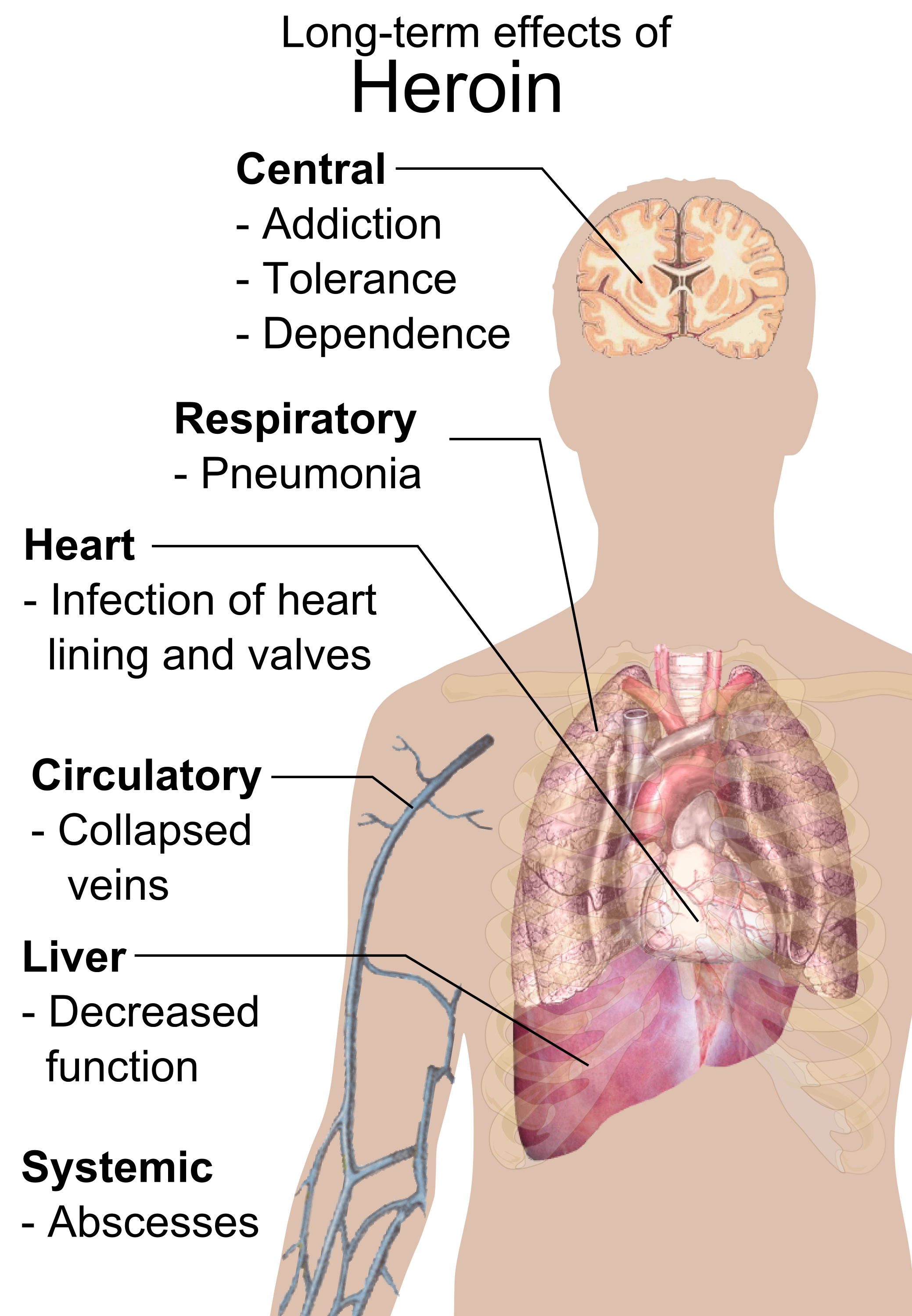Heroin use is a continually growing problem in the United States and all over the world. Drugstatistics.com says, "The 1999 National Household Survey on drug abuse estimated that there were 149,000 new heroin users in 1998 and that nearly 80 percent were under the age of 26." Heroin has become a mythical drug, and the facts about the drug and addiction to heroin can be daunting. Movies like "Trainspotting" paint a terrifying picture of painful withdrawal and hallucination. To understand heroin addiction, it is important to understand why it is so addictive and to understand the effects addiction can have on an addict's life. Source: ehow.com

About Heroin
Heroin is most commonly injected into the arm using a syringe. However, heroin can also be snorted and smoked, though injection remains the most common form. It originates from the opium poppy, a plant found around the world. Opium poppy is also used in the creation of opium and morphine. In fact, all three of these drugs are powerful pain killers. When it was first discovered, heroin was manufactured by Bayer for use as pain medicine. Morphine is still used in the medical field as a highly effective pain killer. All three of these drugs are also highly addictive.
Why So Addictive?
It is heroin and other opiates' pain-killing nature that makes them so addictive. The body manufactures a substance called endorphins, which are also an opioid. Endorphins are used to numb pain during a major injury. They are also used when the body moves and exercises, giving the tearing muscles and aching joints a boost of endorphins which makes exercise pleasurable. Endorphins also come into play during sex. As a result of our use of endorphins, our body is filled with opioid receptors. Heroin is basically a concentrated form of endorphins. It simulates an endorphin rush that is much more powerful than natural. This is what makes the drug so addictive. It hits at the very essence of what gives human beings physical pleasure. Few drugs operate on the human body in such a primal fashion.
Withdrawal Symptoms
Withdrawal is another reason that heroin is so addictive. Heroin withdrawal symptoms are said to be some of the worst an addict can suffer through. Symptoms include, but are not limited to: dilated pupils, goose bumps, insomnia, loss of appetite, tremors, panic, nausea, muscle cramps, stomach cramps, diarrhea, vomiting, shaking and irritability. Instead of suffering through these symptoms, addicts find it easier to continue their unhealthy addiction. The reason these symptoms are so intense is related to the way heroin replaces endorphins in the human body. The body becomes dependent on the unnatural high of heroin opioids. The body begins to think that it is normal to feel that constant rush of pleasure. When it is taken away, the body aches in a horrific and painful manner. Many addicts would rather continue their unhealthy addiction rather than suffering through these symptoms.
Short-Term Effects
Beyond withdrawal symptoms, the health risks of heroin addiction are numerous. Short term effects include a feeling of euphoria, a warm flush of the skin, dry mouth, drowsiness, heavy arms and legs, cloudy mental function and a slower breathing rate. These short-term effects are what's referred to as the "high." The addicts become accustomed to these euphoric feelings and probably have no idea that even the occasional, casual use of heroin can lead to respiratory failure. Even if the addict knows, he probably doesn't care. Long-term effects can be even more serious.
Long-Term Effects
Long-term effects include infection of the heart lining and valves, liver disease, kidney disease and pulmonary complications. Addicts who inject and share needles put themselves at high risk for HIV and hepatitis C. They also are prone to scarred or collapsed veins, abscesses, pneumonia and tuberculosis. Overdose is also a common problem amongst heroin users. The high from heroin eventually tapers off, and more of the drug has to be used each time to achieve that same high. Using too much can lead to seizures, brain damage and even death. Often, heroin is very impure and is mixed with sugar, starch and other questionable chemicals.
Labels:
chemicals,
endorphins,
exercises,
facts heroin addiction,
health,
mental,
mythical,
shaking,
smoked,
snorted,
sugar,
syringes,
vomiting,
will power,
withdraw
Facts About Heroin Addiction
Tuesday, June 7, 2011
Subscribe to:
Post Comments (Atom)
Video
Popular Posts
-
Heroin use is a continually growing problem in the United States and all over the world. Drugstatistics.com says, "The 1999 National Ho...
-
Cocaine (benzoylmethylecgonine) (INN) is a crystalline tropane alkaloid that is obtained from the leaves of the coca plant. The name comes f...
-
Whenever we encounter the word "addiction", the thing that immediately comes to mind is drugs and alcohol abuse. Addiction, howeve...
-
Alcoholism is one of the worlds most common addictions around the world. Becoming addicted to alcohol can not only do harm to your physical,...
-
We often hear the virtues and benefits that positive thinking can bring. The "mind over matter and body" claim actually has scien...
-
A number of genetic, physiological, psychological, and social factors make nicotine addiction a particularly difficult addiction to overcome...
-
Historically, addiction has been defined as physical and psychological dependence on psychoactive substances (for example alcohol, tobacco, ...
-
If you feel that Marijuana is taking over your life and replacing all of your friends, hobbies, and favorite ways to pass the time, then ...
-
Are you suffering from a devastating sex addiction? Are you having trouble with your marriage, with money and time management? Sex addiction...
-
Like any other addiction, sexual addiction can have severe effects on the addict and his or her loved ones. As the addiction escalates, and ...
Blog Archive
Addicted



0 comments:
Post a Comment
Note: Only a member of this blog may post a comment.